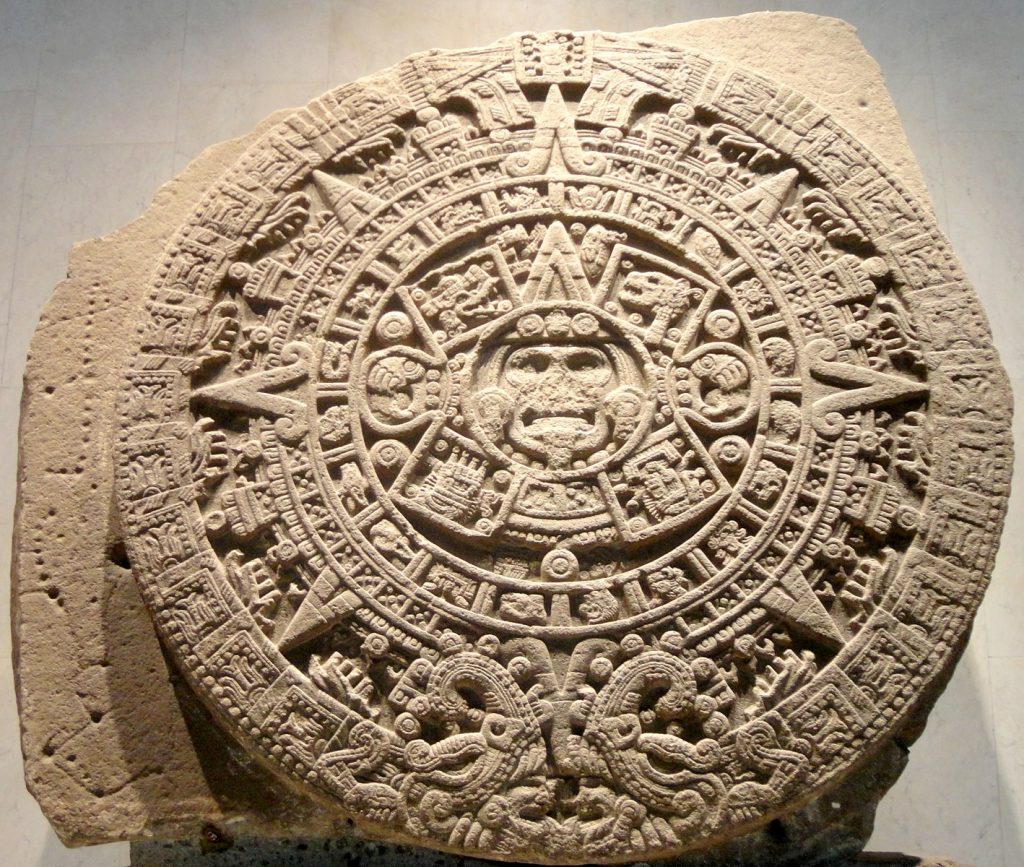
The Aztec Sun Stone is a large stone sculpture made of volcanic rock, and while it remains one of the largest well-preserved artifacts of the pre-columbian era, scholars continue to debate the detailed intentional functions of this calendar stone. Most scholars have agreed that the stone structure represents the cyclical nature of life and death in the Aztec (Mexica) perspective. There is much deliberation on what each piece of the calendar means on its own. It reveals that the Aztec people certainly understood the central role of the sun to human and environmental life. The sun at the center of the calendar has produced a relevant use of iconography and the stone itself is one of Mexico’s most prized ancestral artifact.
It is important to note however, that this artifact was not always praised for its intricacies and design. Upon discovery by the Spanish, the Spanish priests deemed this a diabolical set of beliefs associated with sacrifice and barbarism. Therefore, this piece was hidden from Mexico, and buried under Mexico City’s town square (Zocalo). Mostly all artifacts were destroyed or buried in the name of conversion, despite the complexity or aesthetic appeal.
On December 17, 1790 the Sun Stone would be unearthed during repairs on Mexico City’s Cathedral. There is no clear consensus on when it was built, but modern scholars have estimated it to be created from 1470-1502. Its sudden unearthing garnered interest by many scholars to interpret its meanings and position in the life of the Mexica. This artifact of pre-columbian history gives insight into some of the religious and cultural foundations that founded Mexica life. It also emphasizes the role of the Sun in pre-colonial societies, as their religious, economic, political, cultural, and societal all depended on the movements of the sun.
WORKS CITED
Mata, Juan Carlos Fonseca. Wikipedia Commons. June 29, 2019. Wikipedia Commons. https://commons.wikimedia.org/wiki/File:Piedra_del_Sol_en_MNA.jpg.
Milbrath, Susan. “Eclipse Imagery on the Aztec Calendar Stone.” Mexicon 39, no. 1 (2017): 16-26. Accessed February 10, 2020. doi:10.2307/45163354.
Keber, Eloise Quiñones. “(Re)discovering Aztec Images.” In Amerindian Images and the Legacy of Columbus, edited by JARA RENÉ and SPADACCINI NICHOLAS, 132-62. University of Minnesota Press, 1992. Accessed February 12, 2020. www.jstor.org/stable/10.5749/j.cttttwsc.6.
